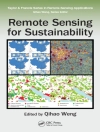The purpose of this book is to present a new proposal for landscape management labor accounts. Many matured countries are now confronting an aging society and a shrinking population. Land degradation in those countries is basically caused by a lack of local labor forces. It is very important, therefore, to consider and develop methods to provide appropriate labor forces for the sustainable management of landscapes or to reduce or shrink landscape management areas sustainably with available labor forces. Landscape management labor accounts provide a foundation for such development.
This book consists of four main parts. The first part is concerned with forming concepts, definitions, and overviews. Change in land management policies, research topics, and issues on landscape management are dealt with in the second part. The third part consists of case studies on landscape management labor accounts. Major landscape types chosen for case studies include urban areas, flatland farmlands, Satoyama, and coastal neighborhoods. In the last part of this section, integration methods to develop landscape management labor accounts on different scales are considered. The fourth part of the book is a detailed exposition of contemporary trials to solve issues of land management for the future in the field of urban, rural, forest, river, and coastal planning. Also discussed is the connection of ecosystem service studies and perspectives on the development of landscape management labor accounts with world landscape management research.
Jadual kandungan
Introduction.- Japanese basic landscape types, and change in population and urban land use.- Urban landscape: Urban planning policies and institutional framework.- Urban periphery landscape: Dichotomization of urban and rural dimensions.- Agricultural landscape: Farmland abandonment and direct payments.- Plantation forest landscape: The paradigm shift in forestry, a belowground ecosystem for sustainability land use.- Inland water landscape: Structural and functional changes in the ecosystem.- Coastal area landscape: Environmental changes and the characteristics of labor activities.- Methodology.- Case studies in a variety of urban greenspaces: Nagoya City.- Urban landscape case study in a middle city: Matsusaka Chuo District.- Case studies in urban forest neighborhood landscape complex units: Fujimaki Town.- Case studies in flatland farmland neighborhood landscape complex units: Asami District.- Case studies in paddy field satoyama neighborhood landscape complex units: Nyu District.- Case study of other satoyama field types within complex neighborhood landscape units: Kayumi District.- Case studies in coastal neighborhood landscape complex units: Saki-Shima Peninsula.- Integration of Landscape Management Labor Accounts .- Urban Planning: Is a Networked Compact City Vision Realistic?.- Urban periphery planning: Concept to link urban and rural communities in the 21st century.- Rural planning: Sustainable management in collaborative activities.- Forest planning: Human resource development for sustainable forest planning.- Inland water system planning: Management for ecosystem rehabilitation.- Coastal planning: Biodiversity restoration and ownership.- Connection to the Ecosystem service studies.- Conclusion:Towards Sustainable Labor Force Management of Landscapes.
Mengenai Pengarang
-Hiroyuki Shimizu, Professor, Graduate School of Environmental Studies, Nagoya University, Nagoya, Japan
-Chika Takatori, Assistant Professor, Graduate School of Environmental Studies, Nagoya University, Nagoya, Japan
-Hiroyuki Shimizu, Professor, Graduate School of Environmental Studies, Nagoya University, Nagoya, Japan
-Chika Takatori, Assistant Professor, Graduate School of Environmental Studies, Nagoya University, Nagoya, Japan
-Junich Kitamura, Research fellow, Graduate school of Bioresources, Mie University, Tsu, Japan
-Norio Kawamura, Associate Professor, Graduate School of Environmental Studies, Nagoya University, Nagoya, Japan
-Kazukiyo Yamamoto, Associate Professor, Graduate School of Life Agricultural Sciences, Nagoya University, Nagoya, Japan
-Akito Murayama, Associate Professor, Graduate School of Engineering, The University of Tokyo, Tokyo, Japan
-Kohei Okamoto, Professor, Graduate School of Environmental Studies, Nagoya University, Nagoya, Japan
-Kazu Hagihara, Associate Professor, The University of Shiga Prefecture, Hikone, Japan
-Nobuko Kawaguchi, Research assistant, Graduate School of Environmental Studies, Nagoya University, Nagoya, Japan
-Hiromi Yamashita, Associate Professor, College of Asia Pacific Studies, Beppu, Japan
-Toru Terada, Assistant Professor, Biosphere Information Science, The University of Tokyo, Tokyo, Japan
-Kazuaki Tsuchiya, Assistant Professor, Department of Ecosystem Studies, The University of Tokyo, Tokyo, Japan
-Yasuhiro Hirano, Associate Professor, Graduate School of Environmental Studies, Nagoya University, Nagoya, Japan
-Takashi Tashiro, Endowed chair associate professor, Disaster Mitigation Research Center Division, Nagoya University, Nagoya, Japan
-Masao Takano, Professor, Graduate School of Environmental Studies, Nagoya University, Nagoya, Japan
-Makoto Oba, Researcher, National Institute for Environmental Studies, Tsukuba, Japan
-Kiichiro Hayashi, Professor, Eco Topia Science Institute, Nagoya University, Japan
-Shigeya Nagayama, Researcher, Aqua Restoration Research Center, Kakamigahara, Japan












